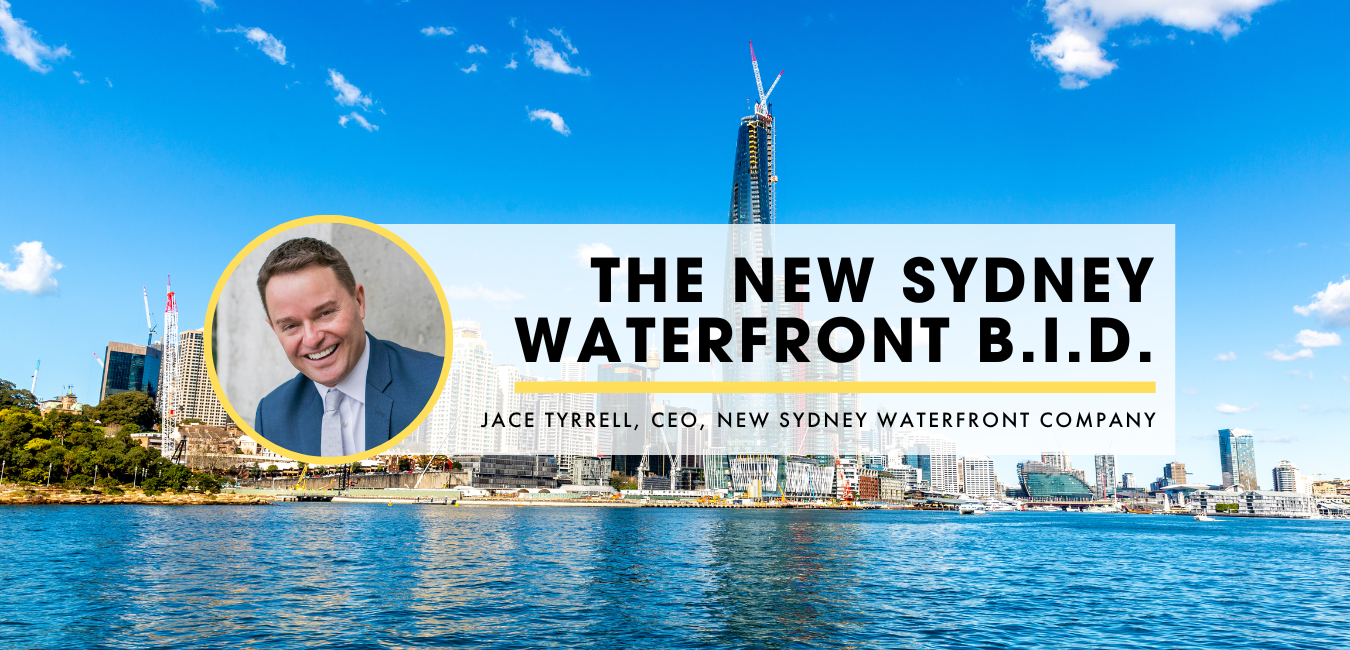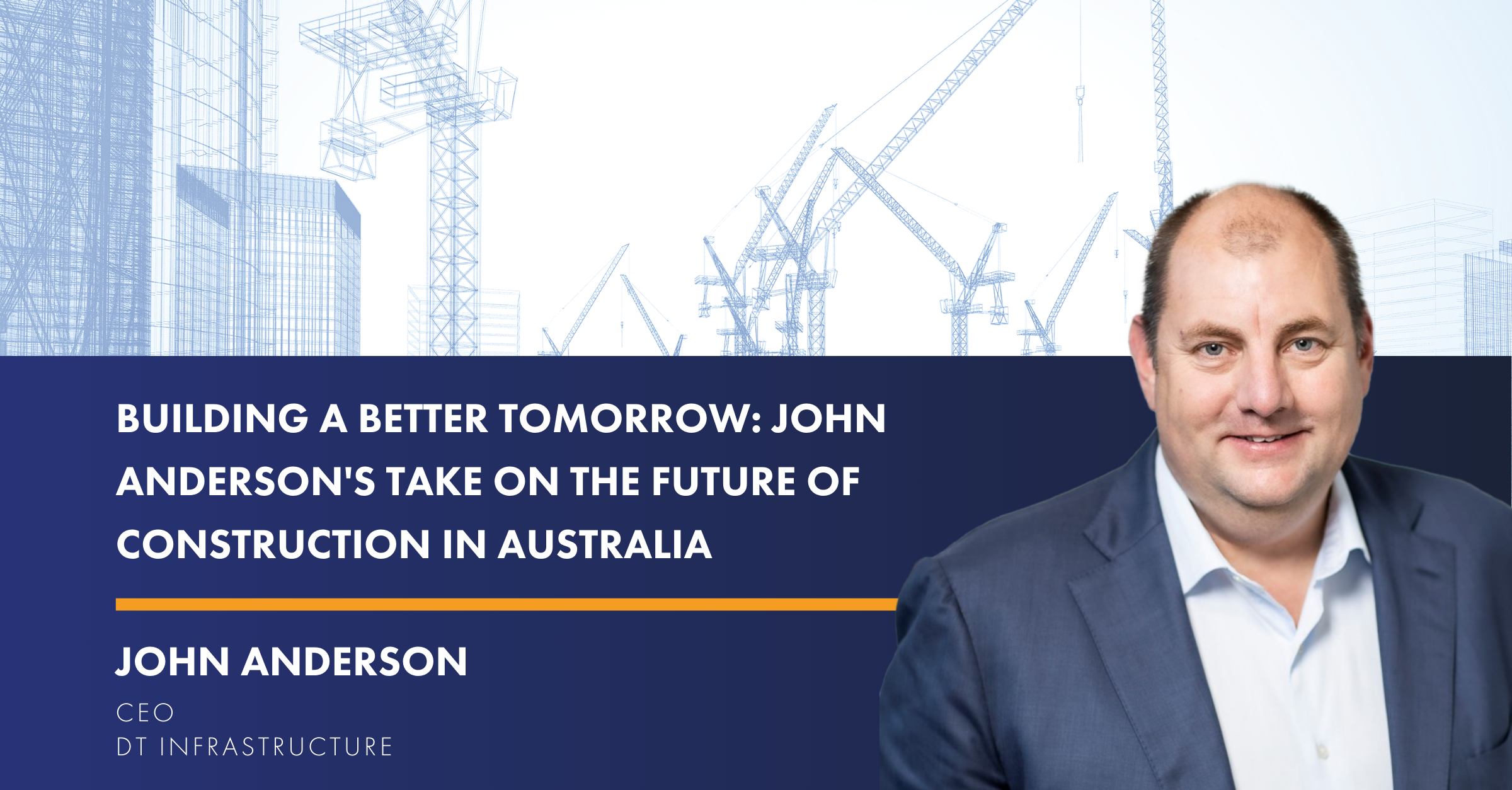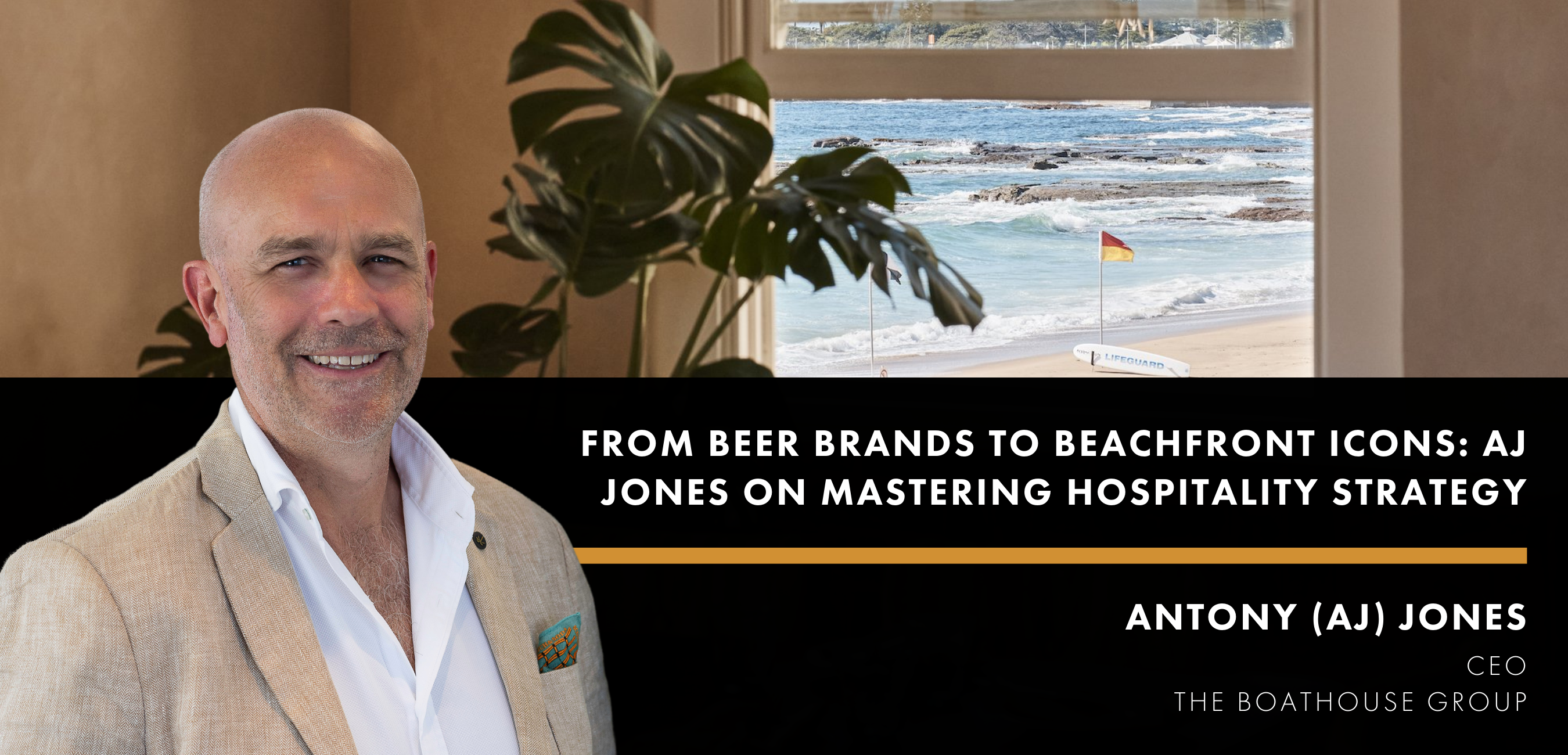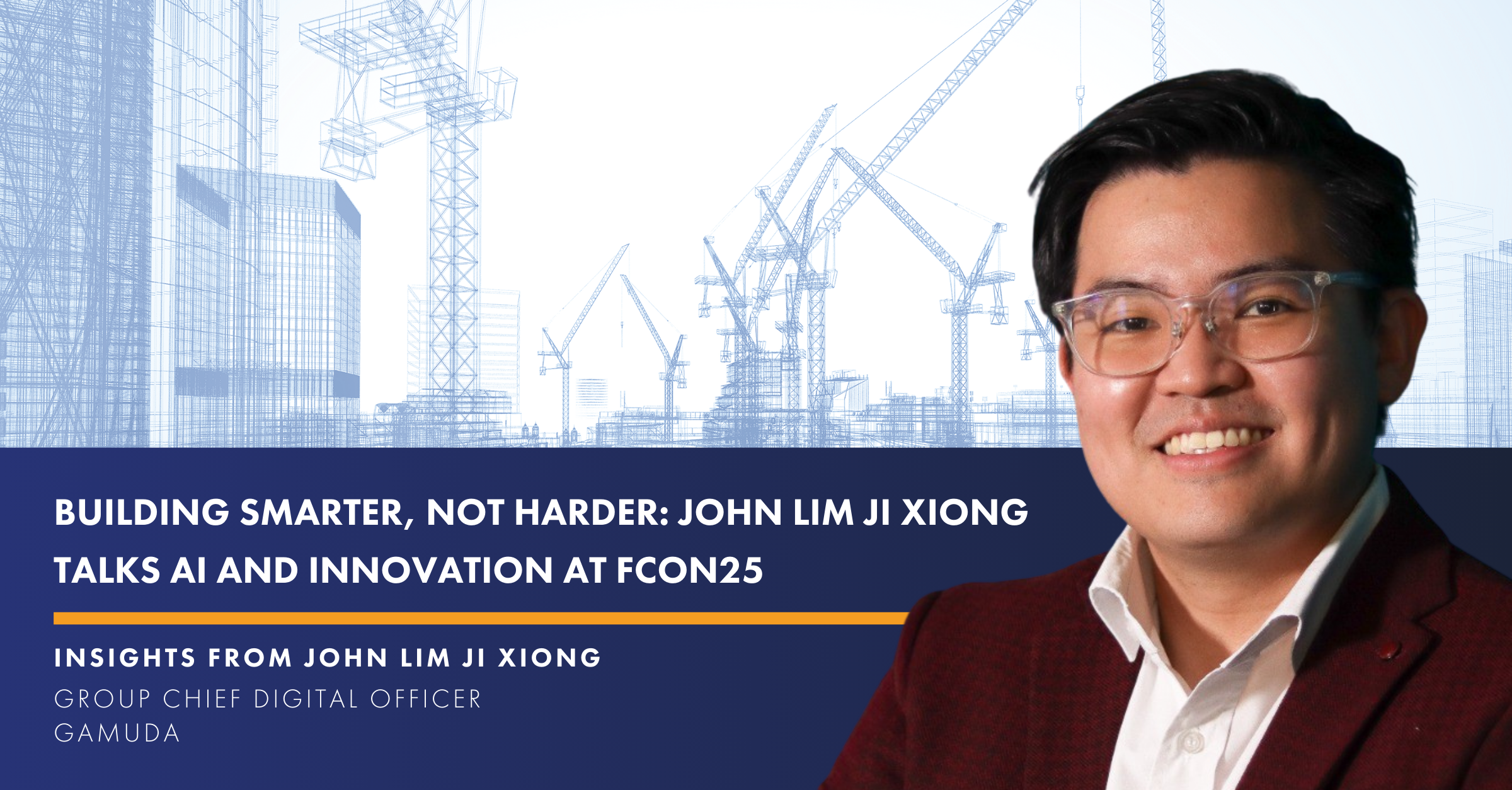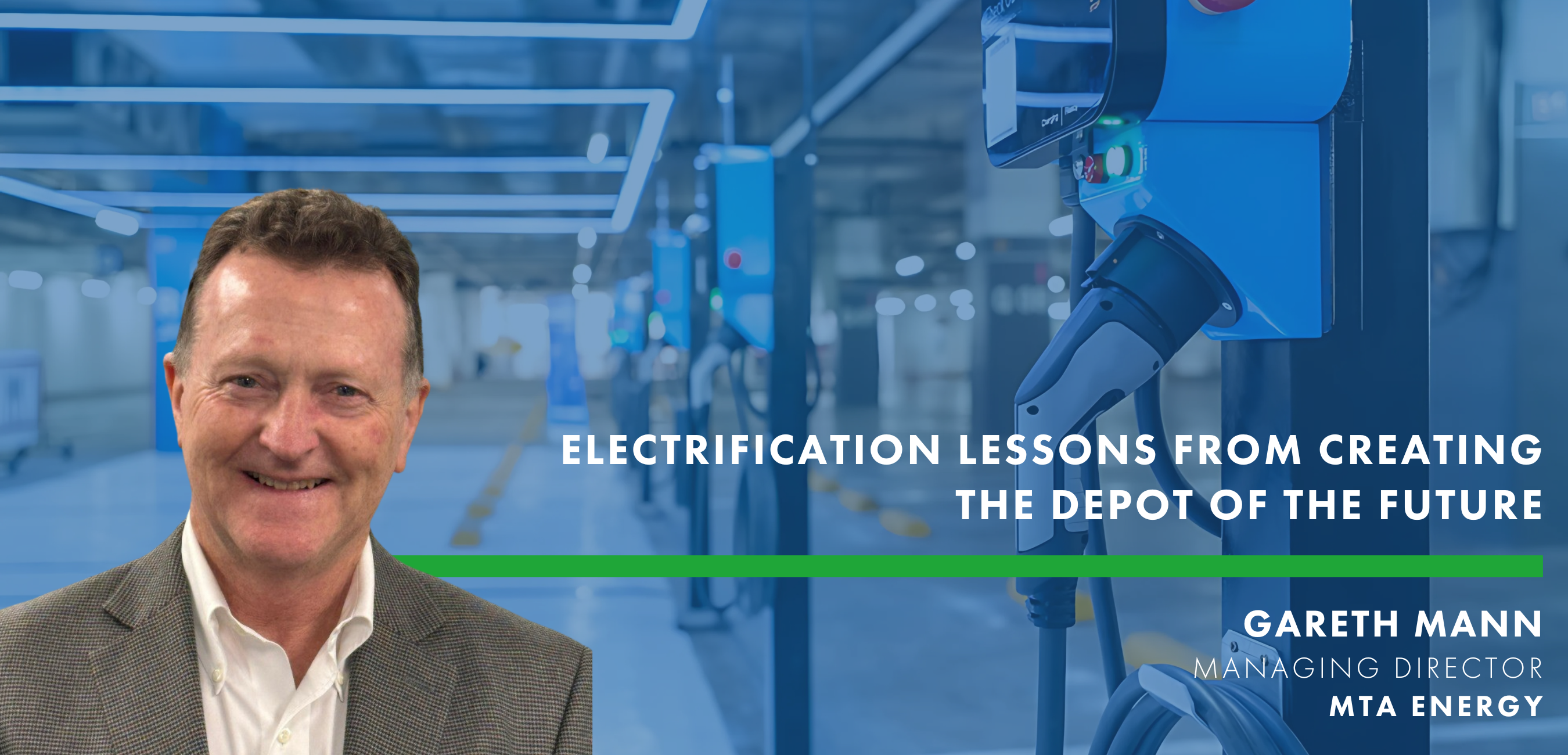The New Sydney Waterfront BID.
After 8 years of driving business strategy and urban renewal in London as Chief Executive Officer of the New West End Company, Jace Tyrell has recently stepped up to another CEO role in his native Australia. Tyrell is now representing the New Sydney Waterfront Company, the very first business improvement district in Australia. It’s an ambitious endeavor, so you can imagine how excited we were to speak with him. Keep reading to check out our interview below!
FuturePlace: You had initially planned on a career in law, what was it about placemaking that drew you into your current career?
Jace Tyrell: I started reading constitutional law, which is a quite niche area of law. I quickly realized that I was going to have a very dry career if I stayed. I considered going into journalism, but I wanted to pursue something business-related. After mulling it over, I realized that I wanted to find a space where businesses could function better in the cities where they were doing their business in, so I moved on to a business degree which, effectively, was quite broad. And then I found myself working in this area of urban regeneration and destination development, and it’s really become a dream career path. In the last 20 years I really found a niche that I relish working in, but I also really find it utterly gratifying the outcomes achieved as well.
FP: You joined the Waterfront Company in October, how have your first few months been?
JT: It’s been very interesting! I’ve also set up a global consultancy firm called City Square, where I’m collaborating with the best experts in this space and working with a number of clients around the world. Sydney is taking up 110% of my time, and rightly so, because I’m throwing everything at this venture as we are the very first improvement district in Australia.
It’s the first pilot in the country, so it’s important we spend time and get this right. We’re going to have to co-create this improvement district with varying perspectives over the next few years, and I’m sure we will get some stuff wrong, unintentionally, along the journey. Still, we’re starting with winning the hearts and minds of everyone with a vested interest in this part of Sydney, and we will, because I know this model works. I’ve seen it work for the last two decades. What makes it work, though, is taking everyone on that journey and applying the model to a really local context. What we don’t want to do, and I am and always talk about this quite often actually is we don’t want to retrofit. We want to make sure we get the planning and the thinking right now with business and our partners, so we’re not spending the next decade after this just trying to patch things up because we haven’t thought deeply and collectively. As long as our fundamentals are really strong, we’ll be able to prove the concept and the value of what we’re doing.
But it’s been an incredible eight weeks. Over 100 meetings. I’ve met everyone from the local residents who walked me around their beautiful streets. I’ve met with the Premier’s team, with the Lord Mayor of Sydney, with various ministers, major property owners, businesses, cultural institutions, and a quite large number of different agencies operating in the placemaking space. So, I think there’s some interesting dynamics going on there. But fundamentally, everyone thinks this part of Sydney needs to perform better, and they feel there’s a burning platform now with this $10 billion of development investment going through this next decade. I mean, Australians like to get stuff done, you know, I think they really are proud of this City. And Sydney is the window to the world effectively for Australia as well. It’s safe to say that there are a lot of eyes on this project and what we deliver, so I’m really honored to have that privilege to work with these partners to deliver this.
FP: The New Sydney Waterfront is Australia’s first Business Improvement District (BID). For those unfamiliar, what is the basic premise of a BID?
JT: The basic premise of a BID is that it’s a collective investment into a place from both public and private sectors. It can be hospitality, retail, leisure, entertainment, commercial offices, property owners, all sorts. You have the whole spectrum of the private sector, working really effectively with relevant public agencies. You’re putting governance and representation in this collective investment, so as someone I admire globally likes to call it “a collective bank account for community-minded businesses.”
When you really think about the ESG outcomes that you want locally and are willing to invest in, and it’s not a huge investment in the scale of many organizations’ budgets, but it has real outcomes for people, customers, and the local community – it is a very profound proposition. And so that’s the premise. And there’s 2000 around the world. As I said, there’s a movement now looking at health improvement districts, sustainability improvement districts, community improvement districts. So it is a model based on thinking about local precinct level outcomes and the problems you are collectively seeking to solve and what level of investment that needs and what sort of programs are going to achieve that. It is centered and works best when you have multiple owners in hybrid public and private spaces.
FP: How does a BID differ from a special economic zone?
JT: Well that’s really where you get top-down or bottom-up approaches. Special economic zones or economic enhancement zones, there are several different names for these and you’ll find them all around the world, are built on top-down government measures. They’re often tax-related, whether it’s through incentives or special financing from city or state investment. Effectively, special economic zones are leveraged by the state to stimulate economic development over the long-term, while a BID is a bottom-up structure that effectively leverages a collaboration dividend.
FP: From an urban renewal perspective, what makes the improvement district model so attractive?
JT: It’s interesting because the model has actually been around for 50 years. But I think over the last couple of decades the improvement district model has become more sophisticated moving into social, environmental outcomes as well as commercial outcomes, and in doing so has made them more relevant to business and civic leaders.
I think the beauty of the improvement model is that it affects change from the bottom-up. You’re taking a cohort of different interests from both the private and public sectors; different institutions across different sectors all get together and ask which are the problems that need to be solved for the district? With this improvement district structure, you have sustainable income to deliver, agreed collective outcomes, and strong governance, that works. The improvement district model is agile, because it’s a bit like the market in that it’s responding to the different requirements of the people and businesses in real time.
Another virtue of this model is that every five years you have to go back to renew your mandate, that means you have to go back to your shareholders, the investors and say, look, is this the right focus for our business strategy and are we delivering? Are these the programs or the outcomes that are most relevant to your business and the precinct? You’ve got to make sure you’re agile to that because the needs of people and places are constantly evolving as well.
FP: You’ve been hailed as an expert in building cities, not just transforming retail destinations. In your opinion, what is a crucial element to city-building that often gets overlooked when it really shouldn’t?
JT: Oh that’s a good question. To start, cities are really complicated places because there’s so much demand within them. I actually read a recent UN report which says that around 80% of us are living in urban places now, so you can imagine how that places a huge pressure on the infrastructure, on the living environment, on the workplace, and everything else a city has to offer.
I firmly believe that the crucial element for effective placemaking is a genuine coalition approach. It takes a lot of time and a lot of consensus building, so it may not be at the top-of-the-list for some urban developers, but I truly believe that it’s crucial for building sustainable cities; in all sense of the word sustainable I’ll give you an example: I was working in Soho, a neighborhood in London, for the last few years. It’s a very authentic part of the London creative sector scene, but it’s also a real melting pot as there’s been 300 years of mixed immigration and trade in this neighborhood. So there are a lot of independent businesses and a lot of different housing tenure in there as well. In working on Soho’s Neighbourhood Plan ,my team and I found that there was a lot of tension between the business community, the developers, the local residents, and the visitors. And look, it started out very binary. Everyone’s on these sides around the table, literally fighting off what they thought was right for their city and for Soho. So we took probably five years to work through which areas everyone could really agree on and the stuff that perhaps couldn’t ever be agreed upon. But through the Neighbourhood Planning coalition model, we got an 80-90% consensus. By the end there were shared agendas around air quality improvements and how we can make Soho a place for all types of different sectors. Again, it took a few years of methodical work, because Neighbourhood Planning is almost like foreign affairs but it was well worth the commitment and the results it yields. We crafted a Neighborhood Plan which we put through a referendum with the local community, the business community and residents, and we had 90% support.
FP: What’s the current timeline for the New Sydney Waterfront development?
JT: We’re very much at the foundation stage. There’s been a number of different constructive partnerships in Sydney’s Western Harbor over the years, so for the next two years our progress will be measured in building a business proposal with input from the thousand businesses and organizations operating here, from the local coffee shop in Pyrmont right through to the global financial and advisory firms based in Barangaroo. We’re thinking two years to get fully established and ten years to transform the precinct from good to the greatest world waterfront. That’s the timeline.
FP: The branding identity for the New Waterfront has yet to be finalized. However, if it were entirely up to you, what would that identity look like?
JL: This is quite a loaded question because everyone has a view on this. You know, quite simply, I think we are Sydney’s waterfront, we are Sydney’s harbor. Everything that Sydney aspires to be as a city with its cultural mix with first nations at our heart, is already here in this part of Sydney.
Everyone knows about the Sydney Opera House and the iconic bridge, but there’s also new iconic features that we want to highlight within the New Sydney Waterfront from our cultural ribbon, like the Yananurala Harbor Walk. I also want to honor the fact that Sydney, from the first nations, has always been a place where people can come together, and it’s still the place where people congregate to celebrate and play. There’s something very deep around gathering of what the Indigenous First Nations refer to as saltwater people coming together since millennia around the harbor. I want to explore this further as we collectively repurpose our destination. But I think, more than just a proposition, something we can all actually coalesce around as a place that has meaning for all of us, whatever business or visitor you are. This is a precinct for everyone. So come back and ask us in a year and I hope I’ll have a more refined answer to where we’ve got to with that!
Malls of the Future Summit
Jace will be speaking at the Malls of the Future Summit, taking place on 1st March 2023. It will explore the factors driving investment in innovative new-build and redeveloped shopping precincts that are going beyond the norm to offer a more personalised and sensory customer experience that creates reasons for local communities to visit, stay longer, feel connected and return time and time again.

